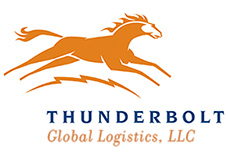Trump Tariff Talk
Is everyone having fun keeping track of the tariffs that the Trump Administration has implemented since April? The uncertainty that has been with us since Jan. 20th when President Trump was sworn in as President has not gone away. The tariff announcements have been like a merry-go-round of starts and stops.
The pause on the higher reciprocal tariffs for most countries will end at midnight Thursday for those countries that have not struck a deal with the Trump Administration. There weren’t 90 deals in 90 days that was promised. It’s more like 6 deals (United Kingdom 10%, Indonesia 19%, Philippines 19%, Japan 15%, Vietnam 20% and the European Union 15% (announced yesterday). These tariff rates are on top of the actual duty rate for that particular harmonized tariff code. These are some of our key trading partners, but many deals still need to be done.
August 1st is this Friday and countries that have not made deals (China is August 12th) with the Administration will see their tariff rate go up at 12:01 AM. That’s the day the pause on the additional higher reciprocal tariffs will end. The initial reciprocal tariff rates have been adjusted per letters that were sent by President Trump to each country.
We do hope these deals lead to more opportunity for U.S. Exporters. This is a key component and we hope it will impact small to medium size exporters and not just Boeing and large chemical companies like DuPont.
The deals that have been reached reduce tariff rates considerably from the proposed tariff rate but it’s still going to add significant costs to importers large and small. It’s essentially a Value Added Tax (VAT) but it can’t be reclaimed like it does in countries that have a VAT system. It remains to be seen if inflation rises over the last half of the year.
The NCBFAA (National Customs Brokers & Forwarders Association) has put together a pdf document that can be used a guideline. We have enclosed it for your review.
Here below is what is fully in place right now.
New Reciprocal Tariffs (initial full executive order can be found here)
- 10% Baseline Tariff that applies to almost all imports to the U.S. with some exclusions. This went into effect April 5, 2025, at 12:01am ET. These are still in effect.
- Reciprocal Country-Specific Tariffs: Higher tariffs on imports from specific countries.
For countries that have yet to secure a deal with the U.S., here are the tariff rates set to take effect on Aug. 1,2025. This is not a full list of countries but most mainstream trading partners.
- Canada: 35 percent
- Mexico: 30 percent
- South Korea: 25 percent
- South Africa: 30 percent
- Kazakhstan: 25 percent
- Laos: 40 percent
- Malaysia: 25 percent
- Myanmar: 40 percent
- Tunisia: 25 percent
- Bosnia and Herzegovina: 30 percent
- Bangladesh: 35 percent
- Serbia: 35 percent
- Cambodia: 36 percent
- Thailand: 36 percent
- Libya: 30 percent
- Iraq: 30 percent
- Algeria: 30 percent
- Moldova: 25 percent
- Brunei: 25 percent
- Sri Lanka: 30 percent
- Brazil: 50 percent *****See note below
Copper will have 50% tariff effective August 1st.
On June 4th Steel and aluminum tariffs for certain products and derivatives rose from 25% to 50% except for the United Kingdom which remains at 25%. These tariffs are not part of any agreement that the administration makes. They will be in place beyond August 1st.
- Exclusions from the above tariffs include
- Items already covered under Section 232: steel, aluminum, automobiles, and auto parts
- Food, medicine, and humanitarian goods (per 50 USC 1702(b))
- semiconductors, lumber
- Pharmaceuticals
- Precious metals
- Energy and critical minerals not available in the U.S.
- Canada and Mexico
- USMCA-compliant goods: 0% tariff
- Non-USMCA goods: 25% tariff
- Steel & Aluminum 25% tariff
- Non-USMCA energy/potash: 10% tariff
See the list of tariff numbers on Annex II Annex II
The country of most concern is Brazil because the rationale for their 50% tariff is political not economic as the United States has a trade surplus with Brazil. We don’t know if this 50% tariff is a reciprocal tariff like the others or something else. The details are not known as of this time. Actually, the details of all of the announced deals have not been released by U.S. Customs The trade has not been given any information on how to enter goods from any country as of August 1st. This is a concern given that Trump Administration has announced there will be no extension of the August 1st deadline. Software providers that Customs Brokers utilize need to have the required programming in place so that goods can be entered correctly and in compliance with all applicable regulations.
**Importers should take note that Annex II states that “the formal language in Annex III governs the tariff treatment of products covered by the action,” even though no Annex III is referenced in the Order. Annex III has finally been published and summarizes the tariff implementation.
https://www.whitehouse.gov/wp-content/uploads/2025/04/Annex-III.pdf
Due to the increase in tariffs, Thunderbolt Global Logistics is recommending that importers obtain their own account with U.S. Customs and pay their duties directly. Foreign based importers can obtain their own ACH account with U.S. Customs.
Here is the link to the CBP website that gives instructions on how to apply.
Once you are approved, we need to know your PUN (Payer Unit Number). It takes about 2-3 weeks to get approved.
Thunderbolt Global Logistics will be adding a 2% administration fee for all duties that we outlay on behalf of the importer. Any import shipment that has total customs duties over $10,000.00 will need to be paid 5 days prior to arrival for sea shipments.
We will continue to monitor the situation closely.
If you have any questions, please contact compliance@thunderboltglobal.com
Thank you very much.
Jim Shapiro
